Phu Quoc Prison History Museum – Where Vietnam’s Past Still Breathes
12/06/2025If you’re seeking a travel experience rich in emotion, cultural depth, and historical significance — beyond beaches and resorts – the Phu Quoc Prison History Museum is a must-visit. Locally known as Nha Tu Phu Quoc or the Coconut Tree Prison, this site is one of the most important historical landmarks in southern Vietnam.
What is Phu Quoc Prison?

Historical origins – From prison camp to national relic
Phu Quoc Prison was initially built by the French colonial regime in the early 1950s as part of their detention infrastructure. During the Vietnam War, it was expanded and operated by the South Vietnamese government and U.S. forces, turning it into a massive prison camp for revolutionary soldiers and war prisoners.
Why is it called the “Coconut Tree Prison”?
The name comes from its location in Coconut Hamlet (Ap Cay Dua) in An Thoi commune, where coconut trees naturally thrive. This peaceful name stands in stark contrast to the pain and suffering once endured there.
Period of Operation (1950s – 1975)
The prison was most active between 1967 and 1973, at one point housing over 40,000 prisoners – primarily soldiers, cadres, and patriots. After Vietnam’s reunification in 1975, the site was preserved as a historical education center.
Why is this site so significant?
A place where revolutionary soldiers were imprisoned
Many resistance fighters were captured and imprisoned here, subjected to brutal torture, with some never making it out alive. Those who survived often became key leaders in post-war Vietnam, a testament to their resilience.
A symbol of patriotism and remembrance
Due to its scale and severity, Phu Quoc Prison is one of the most painful historical sites in the country. It symbolizes Vietnam’s indomitable spirit and the sacrifices made during the struggle for independence.
An emotional experience for visitors
Visitors often leave in silence, moved by the powerful re-creations of torture scenes, the lives of prisoners, and heartfelt farewell messages. It is not just a place to see – but a place to feel and reflect.
What’s inside the museum?
Tiger Cages – Notorious Torture Chambers
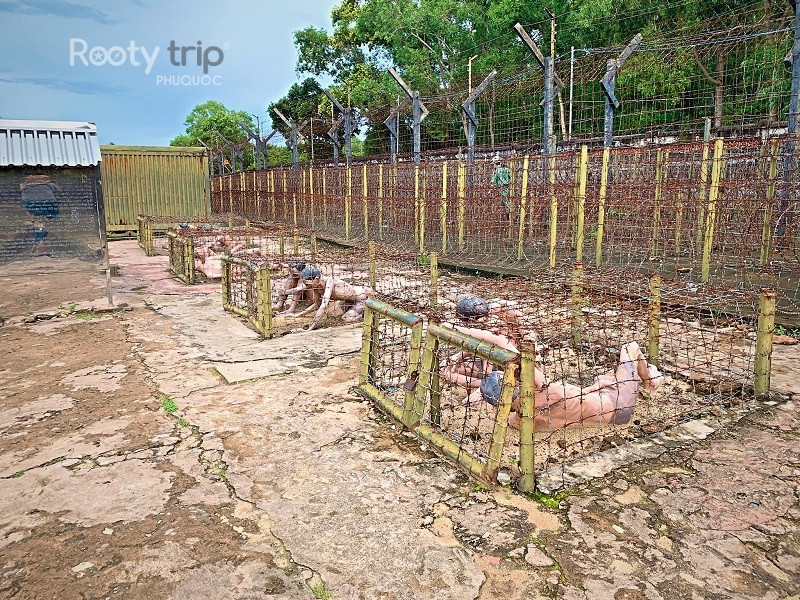
These are small cells recreated to reflect the brutal conditions prisoners endured – barbed-wire cages where they were confined like animals, unable to fully stretch or lie down.
Reenacted forms of inhumane torture
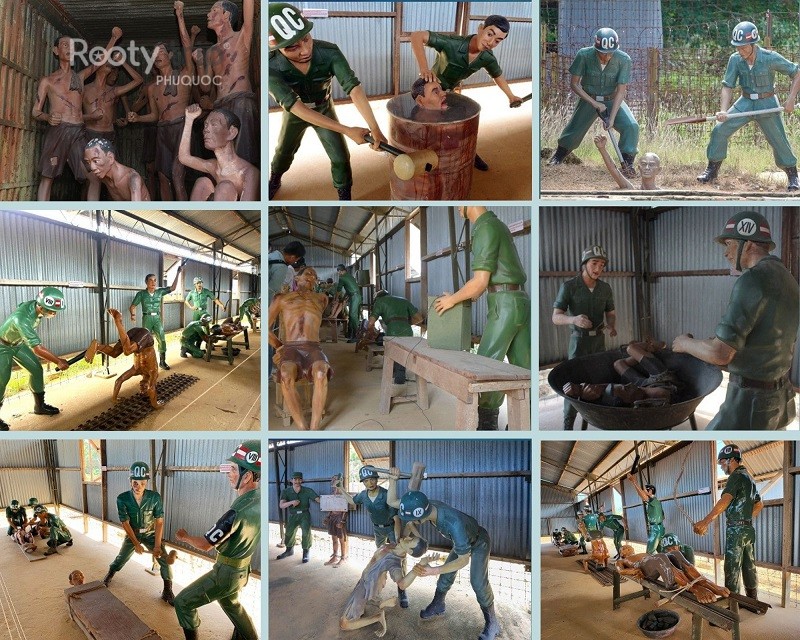
- Nails driven into hands and feet
- Electric shock devices
- Pulling out fingernails and toenails
- Hanging prisoners upside down
- Beating and starvation
- Scalding with boiling water
- Breaking joints with shovels or hammers
- Locking many people in airless, overheated rooms
These methods are depicted using wax figures, dioramas, and haunting archival photos, with each exhibit accompanied by descriptions and survivor testimonies.
Farewell letters, diaries, and original artifacts
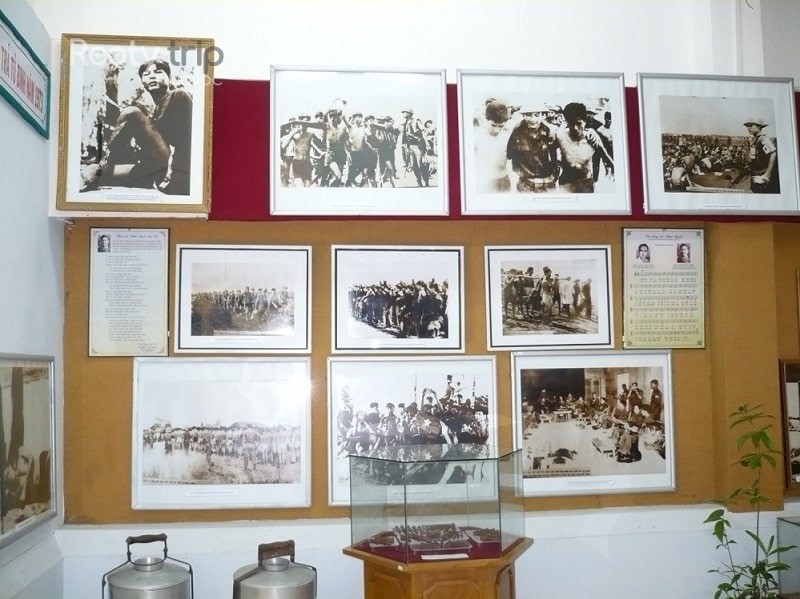
You’ll find blood-written letters, poetry, and touching last words from prisoners to their families – all preserved behind glass or shown with portraits.
Outdoor Statue Garden and Memorial Area
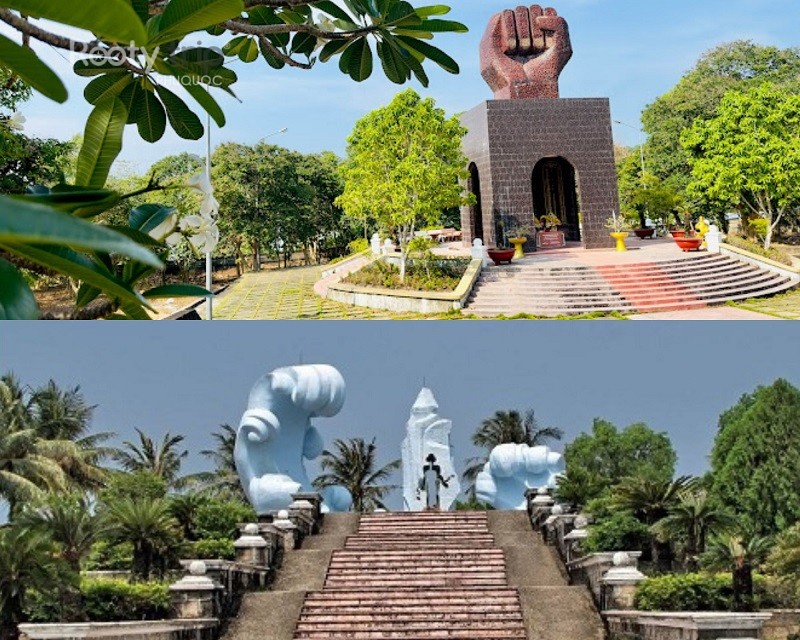
The exterior includes statues of tortured prisoners, a mother holding her son’s photo, and a wall listing the names of those who died in the prison.
Visitor information
Location & How to Get There
The museum is located in An Thoi town, in southern Phu Quoc. It’s easily accessible via taxi, Grab, or motorbike. Travel time from Duong Dong town is 30–45 minutes.
Opening Hours & Entrance
- Hours: 7:30 AM – 11:00 AM and 1:30 PM – 5:00 PM daily
- Admission: Free
Is a Guide Required?
While not mandatory, hiring a local guide or booking a tour with providers like Rooty Trip adds great value to your experience.
How Long to Spend?
We recommend at least 1.5–2 hours to fully absorb the exhibits and pay respects at the memorials.
Visitor tips
- Dress respectfully and modestly
- Keep quiet and respectful behavior throughout
- Avoid taking selfies in torture areas
- Carefully consider bringing small children
Top attractions near Phu Quoc Prison

Bai Sao – White sand and turquoise waters
- Just a short drive away, Bai Sao is perfect for relaxing after an emotional museum visit.
Bai Khem – Untouched and serene beauty
- A quieter beach option with calm waters and soft sand for peaceful reflection.
Sunset Town – A touch of Europe in Phu Quoc
- The Sun Premier Village area features colorful European-style streets, ideal for photos and strolls.
Kiss Bridge – Iconic check-in spot
- Capture breathtaking sunsets and romantic shots at this landmark bridge.
Hon Thom Cable Car – World’s longest overseas cable ride
- A spectacular ride offering panoramic island views – a sharp contrast to the solemnity of the museum.
An Thoi Port – Gateway to southern island tours
- Perfect starting point for seafood feasts and island-hopping excursions.
Where to stay near the prison
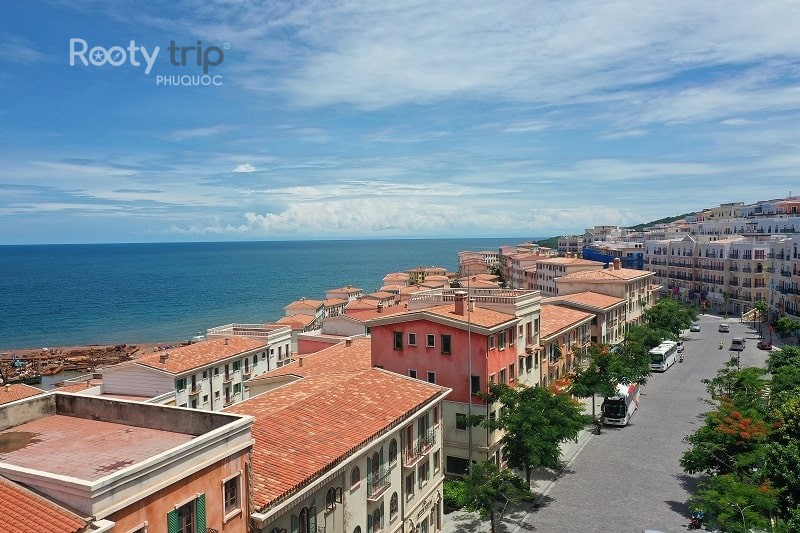
- Premier Residences Phu Quoc Emerald Bay – High-end resort near Bai Khem and close to the prison
- New World Phu Quoc Resort – Tropical-style villas near Bai Khem
- Hillside Boutique Hotel – In the Mediterranean Town, great for exploring Sunset Town and Kiss Bridge
- Phung Hung Boutique Hotel – Affordable and near An Thoi Port, ideal for southern island tours
- Venice Hotel Phu Quoc – Cozy and convenient for visiting the prison and nearby attractions
- Book with: Rooty Trip to get the best deals
Visiting the Phu Quoc Prison History Museum is more than a tourist stop – it’s a historical journey, a moment of silence in time, and a reminder of sacrifice, patriotism, and the pursuit of peace.
If you seek a meaningful journey, rich in history and professionally organized, choose Rooty Trip – the leading local tour operator for Phu Quoc. Rooty Trip offers authentic, emotionally powerful experiences with guides deeply knowledgeable in local history and culture. Whether you’re after all-in-one packages, beach-stay combos, or custom itineraries – Rooty Trip is your trusted partner.










